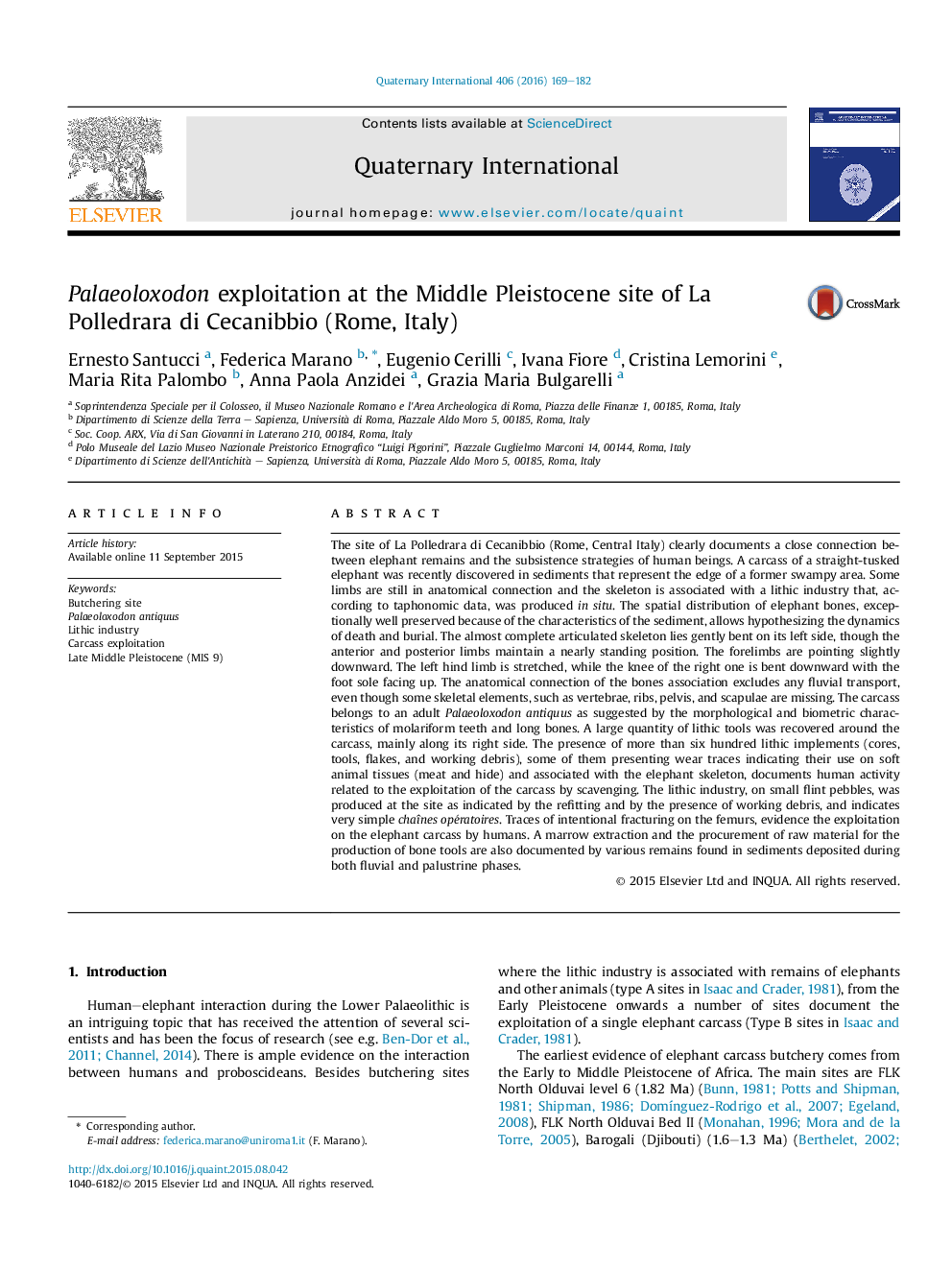| کد مقاله | کد نشریه | سال انتشار | مقاله انگلیسی | نسخه تمام متن |
|---|---|---|---|---|
| 1039951 | 944444 | 2016 | 14 صفحه PDF | دانلود رایگان |

The site of La Polledrara di Cecanibbio (Rome, Central Italy) clearly documents a close connection between elephant remains and the subsistence strategies of human beings. A carcass of a straight-tusked elephant was recently discovered in sediments that represent the edge of a former swampy area. Some limbs are still in anatomical connection and the skeleton is associated with a lithic industry that, according to taphonomic data, was produced in situ. The spatial distribution of elephant bones, exceptionally well preserved because of the characteristics of the sediment, allows hypothesizing the dynamics of death and burial. The almost complete articulated skeleton lies gently bent on its left side, though the anterior and posterior limbs maintain a nearly standing position. The forelimbs are pointing slightly downward. The left hind limb is stretched, while the knee of the right one is bent downward with the foot sole facing up. The anatomical connection of the bones association excludes any fluvial transport, even though some skeletal elements, such as vertebrae, ribs, pelvis, and scapulae are missing. The carcass belongs to an adult Palaeoloxodon antiquus as suggested by the morphological and biometric characteristics of molariform teeth and long bones. A large quantity of lithic tools was recovered around the carcass, mainly along its right side. The presence of more than six hundred lithic implements (cores, tools, flakes, and working debris), some of them presenting wear traces indicating their use on soft animal tissues (meat and hide) and associated with the elephant skeleton, documents human activity related to the exploitation of the carcass by scavenging. The lithic industry, on small flint pebbles, was produced at the site as indicated by the refitting and by the presence of working debris, and indicates very simple chaînes opératoires. Traces of intentional fracturing on the femurs, evidence the exploitation on the elephant carcass by humans. A marrow extraction and the procurement of raw material for the production of bone tools are also documented by various remains found in sediments deposited during both fluvial and palustrine phases.
Journal: Quaternary International - Volume 406, Part B, 25 June 2016, Pages 169–182